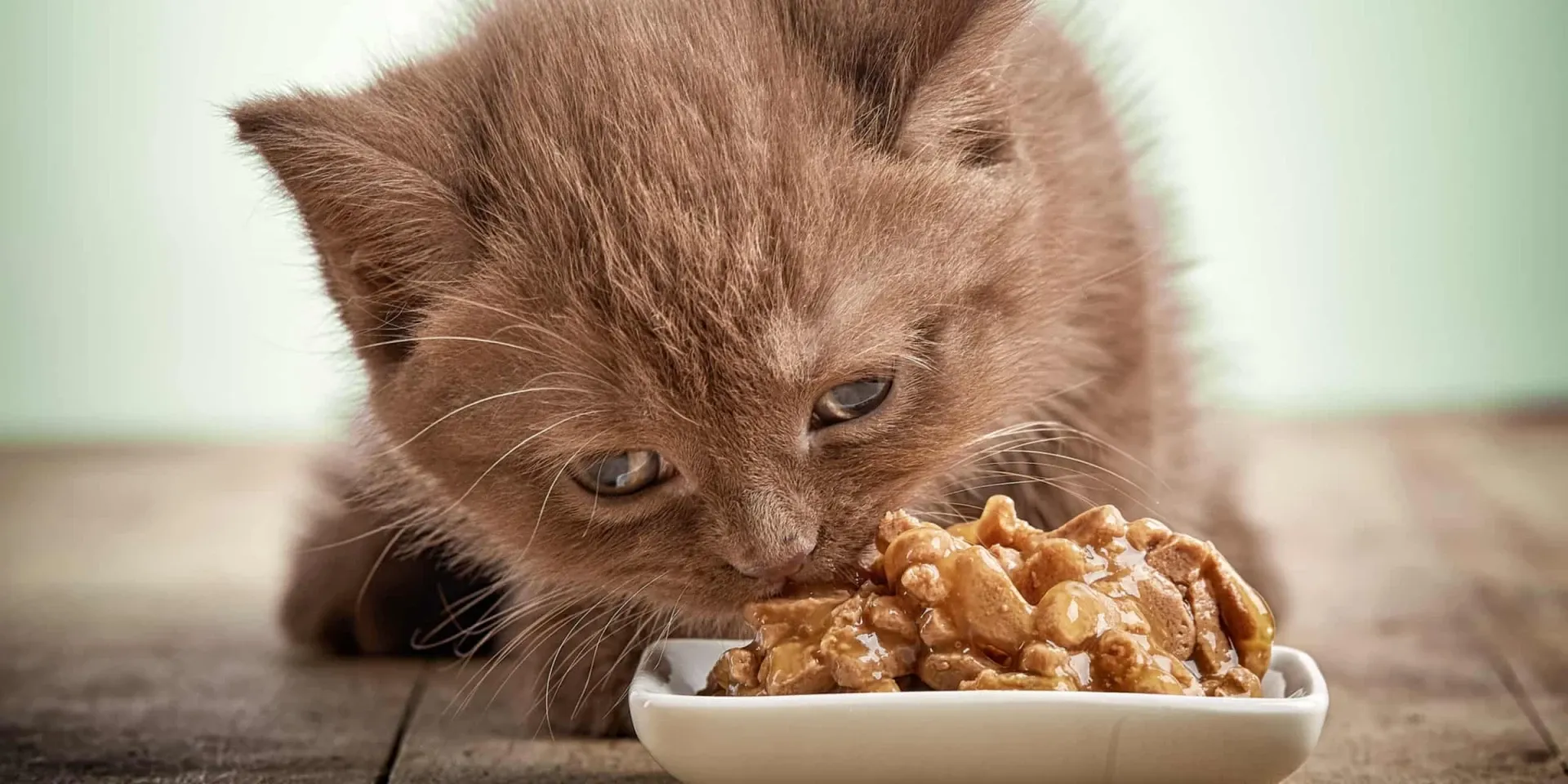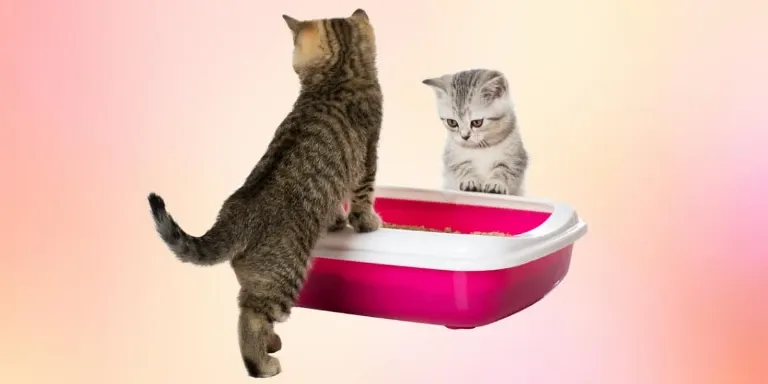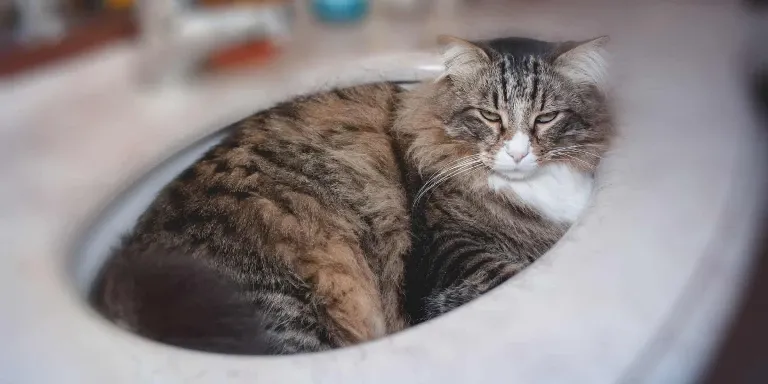The Best Fluffy Pancakes recipe you will fall in love with. Full of tips and tricks to help you make the best pancakes.

Are you considering feeding your kitten tuna as part of their diet? While tuna may seem like a healthy and convenient option, there are important factors to consider before making it a staple in your kitten’s meals.
Kittens can eat tuna, but it should be given in moderation. Tuna should not be the main part of their diet as it lacks certain nutrients that kittens need for proper growth and development. It is best to consult with a veterinarian to determine the appropriate diet for a kitten.
As a responsible pet owner, it’s important to understand the potential risks and benefits of feeding tuna to your kitten. In this article, we’ll explore the nutritional benefits of tuna for kittens, the types of tuna to avoid, and how to introduce tuna to your kitten’s diet.
We’ll also discuss the risks of overfeeding tuna, signs of tuna overdose, and alternatives to tuna. By following best practices for feeding tuna to your kitten, you can ensure that they are getting the nutrients they need without compromising their health.
Types of Tuna to Avoid
Don’t give your kitten tuna that’s high in mercury or sodium – they’re not good for their little bodies! When it comes to feeding your kitten tuna, it’s important to be mindful of the type of fish you’re giving them.
Some toxic tuna varieties can contain high levels of mercury, which can be harmful to your kitten’s health. Mercury is a toxic metal that can cause severe damage to the nervous system, leading to symptoms such as tremors, seizures, and even death in extreme cases.
While tuna is generally a healthy source of protein and omega-3 fatty acids for humans and animals alike, it’s crucial to choose the right type of tuna for your kitten. Avoid giving your kitten tuna that’s high in mercury, such as bluefin, bigeye, and albacore tuna. These species of tuna tend to accumulate more mercury in their bodies than other types of fish, which can cause health problems over time.
Instead, opt for light tuna or skipjack tuna, which contain lower levels of mercury and are safer for your kitten to consume. When it comes to mercury levels in tuna, it’s important to note that the size and age of the fish can play a significant role. Generally, larger and older fish tend to have higher levels of mercury than smaller, younger fish.
Therefore, it’s best to choose smaller, younger tuna fish when feeding your kitten to minimize their exposure to mercury. By being mindful of the type of tuna you give your kitten, you can ensure that they’re getting all the nutritional benefits of tuna without putting their health at risk.
Now that you know which types of tuna to avoid, let’s explore the nutritional benefits of tuna for kittens.
Nutritional Benefits of Tuna for Kittens
You absolutely need to know about the incredible health benefits that come with adding tuna to your feline friend’s diet. Tuna is an excellent source of protein, which is essential for your kitten’s growth and development. It contains all the necessary amino acids that your kitten needs for healthy muscle growth and repair. In fact, a single serving of tuna can provide up to 25 grams of high-quality protein.
Another crucial benefit of tuna for kittens is that it’s a rich source of omega-3 fatty acids. These essential fatty acids are critical for your kitten’s brain development, immune system, and overall health. Omega-3 fatty acids are also essential for healthy skin and a shiny coat, making tuna an excellent addition to your kitten’s diet.
However, it’s important to remember that moderation is key when feeding your kitten tuna. While tuna is an excellent source of protein and omega-3 fatty acids, too much of it can be harmful to your kitten’s health. Overconsumption of tuna can lead to mercury poisoning, which can cause serious health problems. Therefore, it’s essential to limit the amount of tuna you feed your kitten and make it a small part of a balanced diet.
Moderation is Key
Remember that balance is important when incorporating tuna into your furry friend’s diet. While tuna can be a great source of protein and omega-3 fatty acids, it shouldn’t be the sole source of nutrition for your kitten.
Portion control is key when giving your kitten tuna. Too much tuna can lead to mercury poisoning, which can cause neurological damage and even death.
Additionally, tuna shouldn’t be a regular part of your kitten’s diet. Feeding your kitten tuna every day can lead to potential health risks, such as an upset stomach or urinary tract problems. It’s important to provide your kitten with a balanced diet that includes a variety of proteins, vitamins, and minerals.
If you’re looking for alternatives to tuna to incorporate into your kitten’s diet, consider cooked chicken or turkey, which are both lean sources of protein. You can also try offering your kitten small amounts of cooked fish, such as salmon or trout, which are also high in omega-3 fatty acids.
Remember to always consult with your veterinarian before making any significant changes to your kitten’s diet, and to always practice moderation when feeding your furry friend.
Alternatives to Tuna
Consider incorporating cooked chicken or turkey, as well as small amounts of cooked salmon or trout, into your furry friend’s diet as alternative sources of protein and omega-3 fatty acids. These protein-rich alternatives can provide your kitten with the necessary nutrients without the potential risks that come with feeding them too much tuna.
If you’re looking for vegetarian options, there are also several options available. Lentils, chickpeas, and quinoa are all protein-rich plant-based alternatives that can be added to your kitten’s diet in small amounts. However, it’s important to note that cats are obligate carnivores and require a diet that is primarily meat-based.
When introducing new foods to your kitten, it’s important to do so gradually and in small amounts. This will help prevent any adverse reactions and allow your kitten to adjust to the new food. With these alternatives in mind, you can provide your kitten with a variety of protein sources while also avoiding the potential risks associated with feeding them too much tuna.
Moving forward, it’s important to understand how to safely introduce tuna into your kitten’s diet.
Introducing Tuna to Your Kitten
Feeling unsure about how to safely add tuna to your feline friend’s diet? Let’s explore some tips and tricks for introducing this tasty fish in a healthy way.
First and foremost, it’s important to remember that tuna should only be given as an occasional treat and not as a regular meal. Feeding your kitten tuna every day can lead to deficiency in essential nutrients that are vital for their healthy growth.
When introducing tuna to your kitten, start with small amounts and watch for any signs of allergic reactions such as vomiting, diarrhea, and difficulty breathing.
It’s also important to note that not all tuna is equal. Albacore tuna, for example, has higher levels of mercury compared to other tuna species. To reduce the risk of mercury poisoning, it’s recommended to limit the feeding frequency of tuna to once or twice a month.
If you’re looking for tuna substitutes, there are plenty of options available that provide similar nutritional benefits. Cooked chicken, turkey, and lean fish such as cod, haddock, and salmon can be great alternatives. Just make sure to avoid giving your kitten raw fish or fish that has been seasoned with garlic or onions, as these can be harmful to their health.
With these tips in mind, you can safely introduce tuna or other fish to your kitten’s diet and keep them healthy and happy. Speaking of health, let’s now take a look at the signs of tuna overdose and what to do if you suspect your kitten may have eaten too much.
Signs of Tuna Overdose
If you’re not careful, giving your pet too much tuna can lead to symptoms of mercury poisoning such as muscle weakness and tremors. This is because tuna contains high levels of mercury, which can accumulate in your cat’s body over time.
Some common symptoms of tuna overdose in cats include vomiting, diarrhea, lethargy, and loss of appetite. If you notice any of these signs in your kitten, it’s important to take them to the vet immediately for treatment.
Treatment for tuna overdose in cats typically involves inducing vomiting to remove any remaining tuna from the stomach. Your vet may also administer activated charcoal to help absorb any remaining toxins in the digestive system. In severe cases, your kitten may require hospitalization and intravenous fluids to help flush out the toxins from their system.
The best way to prevent tuna overdose in cats is to limit your kitten’s intake of tuna and other fish, and to always monitor their behavior and health closely.
Feeding your kitten tuna can be a risky proposition, as it contains high levels of mercury that can be toxic to cats in large amounts. To minimize the risks of feeding tuna to your kitten, it’s important to take precautions such as limiting their intake and feeding them a balanced diet that includes other sources of protein and nutrients.
In the next section, we’ll explore the risks of feeding tuna to kittens and discuss some tips for keeping your kitten healthy and safe.
Risks of Feeding Tuna to Kittens
Watch out for the potential dangers of giving your furry friend too much tuna, as it can have negative effects on their health. Kittens are especially vulnerable to these risks due to their small size and developing bodies. While tuna can be a great source of protein and omega-3 fatty acids, it can also lead to mercury poisoning and other health problems if fed in excess.
Mercury poisoning is a serious concern when it comes to feeding tuna to kittens. Tuna is a large fish that can accumulate high levels of mercury in its flesh. This can be toxic to cats, causing neurological and developmental problems. Symptoms of mercury poisoning include loss of coordination, twitching, and seizures. To prevent this, it’s important to limit your kitten’s intake of tuna to small amounts and only occasionally.
Other potential health risks of feeding tuna to kittens include digestive issues such as vomiting and diarrhea, as well as allergic reactions. To ensure your kitten stays healthy, it’s best to stick to a balanced diet that includes a variety of protein sources. If you do decide to give your kitten tuna, make sure it’s a high-quality, low-mercury brand and feed it in moderation.
In the next section, we’ll discuss the best practices for feeding tuna to kittens without putting their health at risk.
Best Practices for Feeding Tuna to Kittens
When feeding tuna to your kitten, it’s important to choose high-quality tuna that is packed in water instead of oil. Avoid tuna that has added seasonings or flavors, as these can be harmful to your kitten’s digestive system.
To ensure your kitten gets a balanced diet, mix the tuna with other nutritious foods such as cooked chicken or vegetables. By following these best practices, you can safely incorporate tuna into your kitten’s diet and provide them with essential nutrients.
Choose High-Quality Tuna
To ensure that your kitten is getting the best nutrition, opt for high-quality tuna when incorporating it into their diet. When choosing safe tuna, look for brands that have been tested for mercury content in their products. Mercury is a toxic substance that can harm your kitten’s health, and it’s important to choose brands that have lower levels of mercury.
Aside from mercury content, it’s also important to choose tuna that is free from added flavors or seasonings. Kittens have sensitive stomachs, and certain flavors or seasonings can upset their digestive system. Stick to plain, high-quality tuna to ensure that your kitten is getting the best nutrition without any unnecessary additives.
Avoid Seasonings or Flavors
If you want to feed your kitten tuna, it’s essential to choose high-quality tuna. However, you should avoid seasonings or flavors when feeding tuna to your kitten. This is because many seasonings and flavors can be harmful to your pet’s health.
Healthy seasonings and spices like garlic and onion can cause digestive issues and even anemia in cats. Moreover, some flavors may contain additives that are not good for your kitten’s health, such as excess salt or sugar. So, it’s best to stick to plain tuna and avoid any flavorings or seasonings.
If you’re concerned about the mercury content in tuna, you can opt for tuna substitutes that are lower in mercury levels.
To ensure that your kitten gets a balanced and nutritious diet, you can mix tuna with other healthy foods. In the next section, we’ll discuss how to mix tuna with other nutritious foods to create a well-rounded meal for your furry friend.
Mix with Other Nutritious Foods
You can create a well-rounded meal for your furry friend by combining the nutritious tuna with other healthy ingredients.
Tuna alone isn’t enough to provide a balanced diet for your kitten, so mixing it with other foods is essential.
Some great mixing options include cooked vegetables like green beans or sweet potatoes, or even adding a small amount of cooked chicken or turkey.
When serving tuna to your kitten, it’s important to consider the portion size and frequency.
A small amount of tuna mixed with other nutritious ingredients can be given to your kitten as a special treat a few times a week.
It’s also important to avoid giving your kitten canned tuna that contains added salt or seasonings.
By mixing tuna with other healthy ingredients and serving it in moderation, you can provide your kitten with a tasty and nutritious meal.
Is Feeding Tuna to Kittens Safe?
Feeding tuna to kittens is generally safe in moderation. However, too much can lead to mercury poisoning. It’s best to stick to kitten-specific food to ensure balanced nutrition. If you do give your kitten tuna, be sure to follow kitten bites safety tips to prevent accidental harm.
Conclusion
Congratulations! You now have a good understanding of whether or not tuna is appropriate for your kitten’s diet.
Remember, not all types of tuna are safe for your feline friend, so be sure to avoid those that are high in mercury or sodium. That being said, tuna can be a great source of protein and omega-3 fatty acids, which are essential for your kitten’s growth and development.
However, as with any food, moderation is key. Too much tuna can lead to an overdose of nutrients that can be harmful to your kitten’s health. Additionally, there are alternative sources of protein and omega-3 fatty acids that you can include in your kitten’s diet.
Always consult with your veterinarian before making any changes to your kitten’s diet. As the saying goes, “knowledge is power,”and by educating yourself on the benefits and risks of feeding tuna to your kitten, you can make informed decisions that will help keep your furry friend happy and healthy.








